It’s always a smart idea to grow plants that are suited to your climate. You’re working with Mother Nature rather than against her.
But there are some cases where I just don’t care what’s right for my climate – passionflowers are one of those must-have plants.
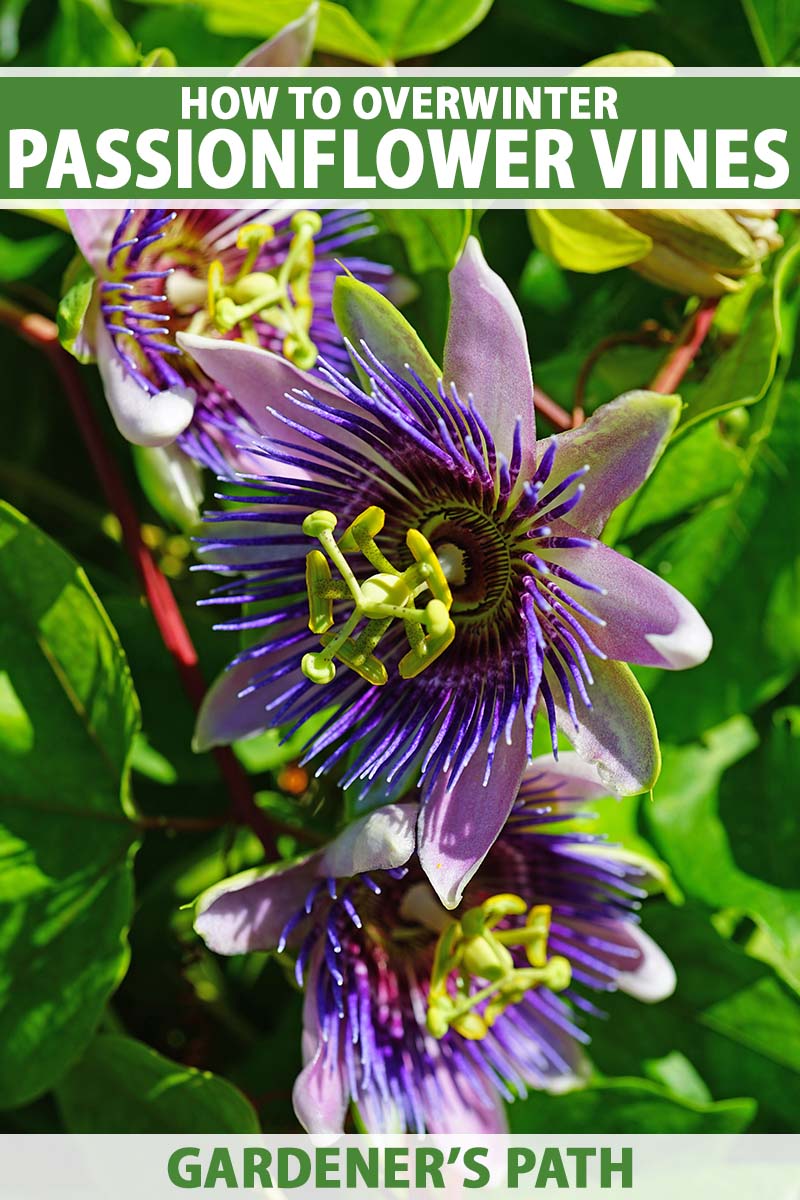
We link to vendors to help you find relevant products. If you buy from one of our links, we may earn a commission.
The striking flowers are so appealing, as an ornamental, edible, and herbal option, that it’s worth giving them a little extra love during the winter so I can keep them around from year to year as perennials.
Overwintering is a common gardening practice and we do it with all kinds of plants that couldn’t normally survive in our local climates.
It requires a little extra effort than growing species that are suited to your neck of the woods, but sometimes it’s worth the extra effort for something you truly love.
Are you concerned about protecting your passionflower vine during the cold months? This guide can help. Coming right up, here’s what we’ll discuss:
What You’ll Learn
Don’t give up on your passionflower dreams just because you live somewhere that isn’t ideal for these dramatic wonders.
Anyone can make them a part of their garden if they take the right steps to overwinter their plants.
Passionflower Cold Tolerance
Passionflowers grow in the wild in warm, subtropical environments. You won’t find them hanging out in the wilds of Alaska.
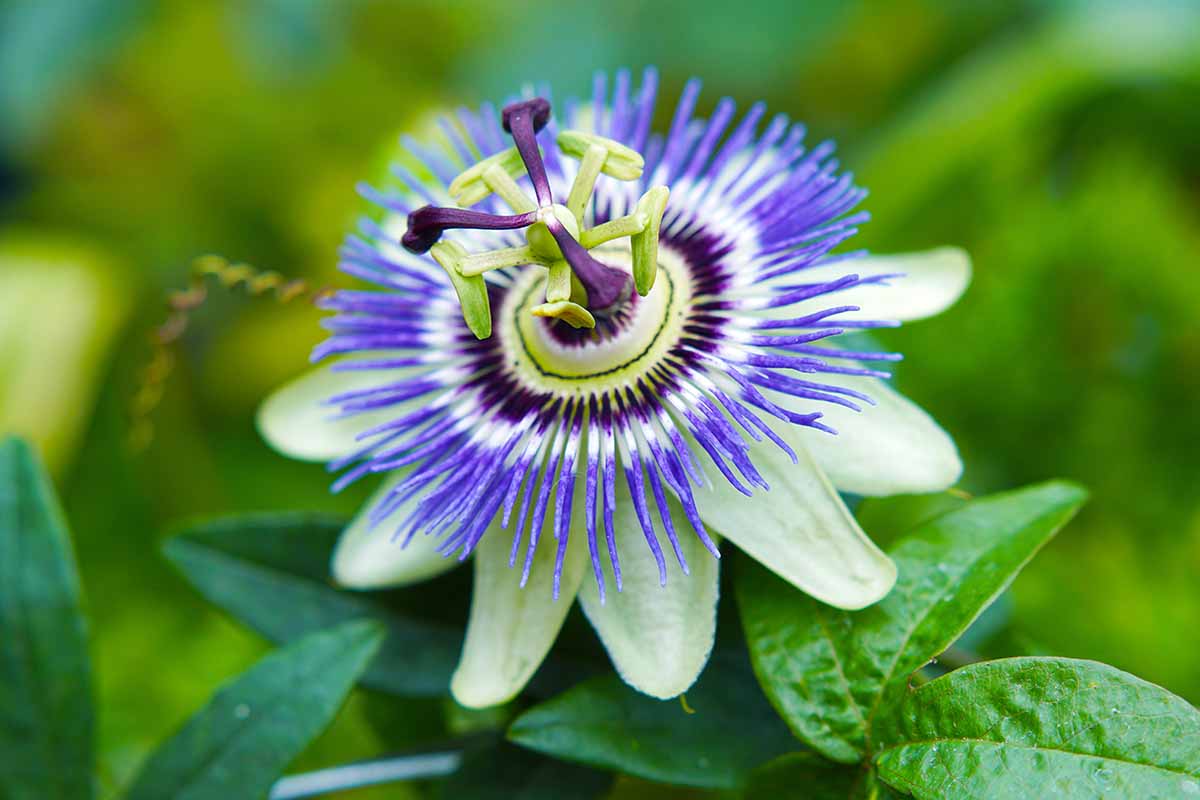
In North America, you can find native and naturalized species growing throughout the South and even as far north as Illinois. Most don’t like any frost at all, but there are a few cultivars that are hardy down to 20°F.
If you have one of the more tender types or you live in a climate that is colder than that in the winter, you’re going to need to provide your passionflower vine with some protection.
You can do this by relocating pots in a place that’s sheltered like a basement, garage, or even your kitchen. Or you can provide a little protection outdoors if you live somewhere that is just slightly cooler than your Passiflora prefers.
Overwintering Indoors: Two Ways
There are two ways to overwinter your vines indoors. The first is to put them into a dormant state until spring arrives. The second involves indoor care without inducing dormancy.
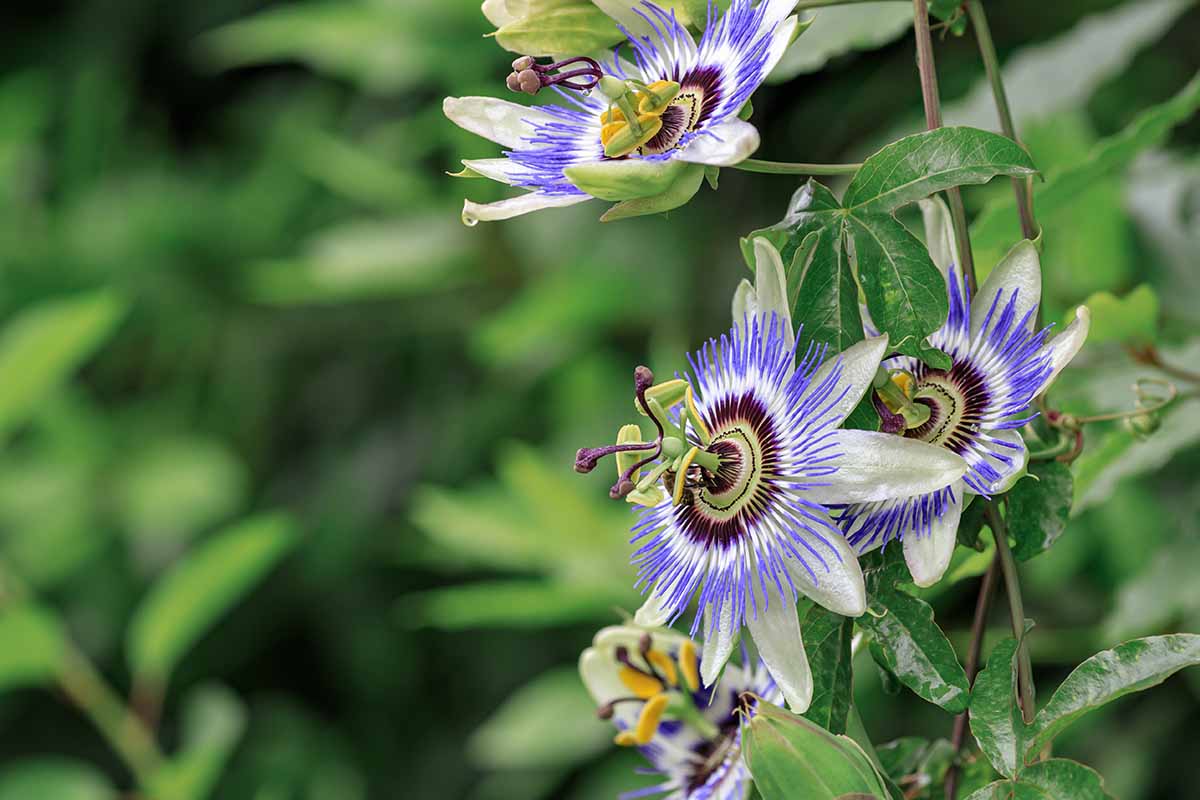
For the first option, bring the container indoors into your basement or garage. You want to put it somewhere dark and cool, but not where the pot will be exposed to freezing temperatures. It shouldn’t be exposed to any sun, either.
You’re basically trying to recreate the conditions it would experience normally in the wild.
Trim the vines back to a foot or two long before you move the plant. It will eventually drop its leaves, so don’t worry when this happens. It’s a normal response to the change in seasons and just means that the vine is entering dormancy.
Water the soil once a month so the soil feels like a well-wrung-out sponge but no wetter.
That’s it! Less is more in this situation, but keep an eye on the plant to watch for any signs of fungal growth.
If fungi come calling, treat the soil with a copper fungicide soak.
Bonide Liquid Copper Fungicide
Grab a 16-ounce bottle of Bonide Liquid Copper Fungicide concentrate at Arbico Organics and mix according to the manufacturer’s directions. Soak the soil once every two weeks until the spores are gone.
The second method is to keep the vine alive and happily growing indoors, without letting it go dormant.
To do this, you’ll need to treat the passionflower like a houseplant. Place it near a sunny window where it will receive at least four hours of sunlight per day, but preferably six or more hours.
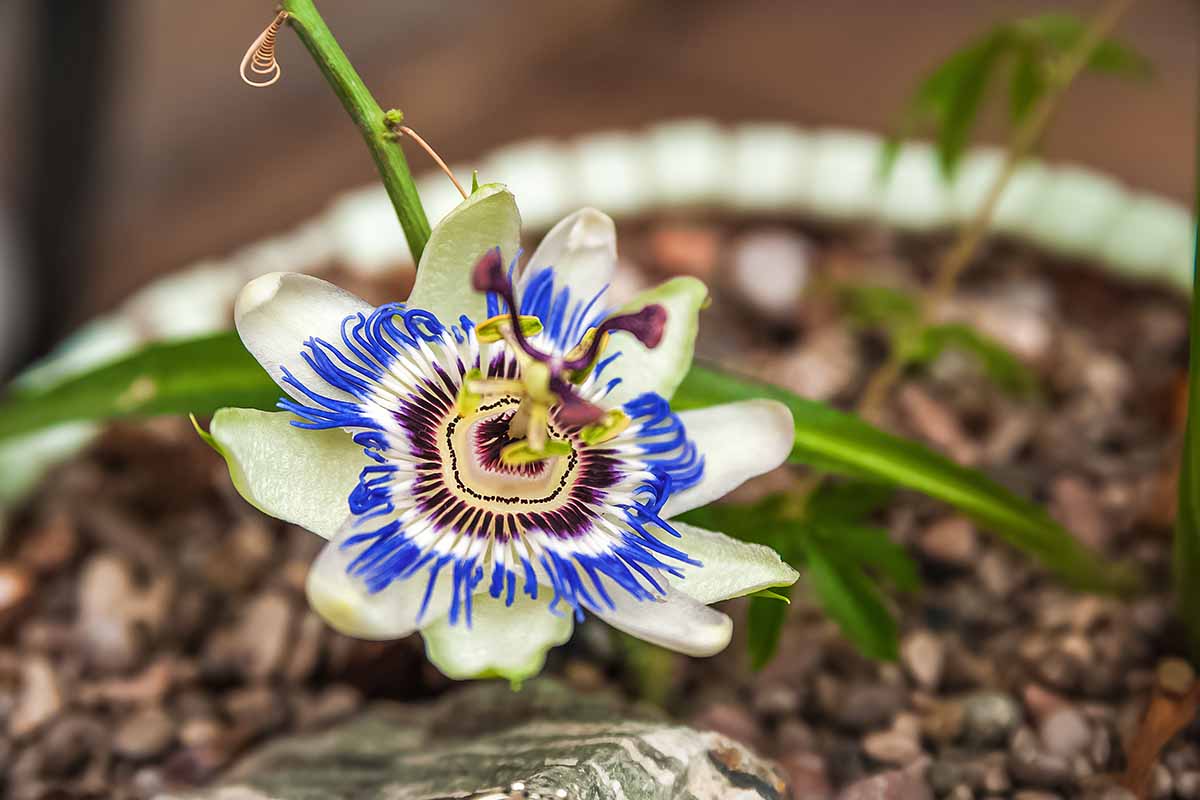
Trim it back a bit so that it stays within a manageable size. Assuming you have some sort of trellis in the container with your vine, you can trim it back to the trellis. Remove any flowers.
Water it every week or two to keep the soil moist but not wet. You must be careful not to overwater. The plant will need much less moisture indoors during the winter than it did outdoors during the summer.
Bringing Your Plant Back Outdoors
Whether you kept your passionflower awake or let it go dormant, you have to reintroduce it carefully to the big outdoors once spring arrives.
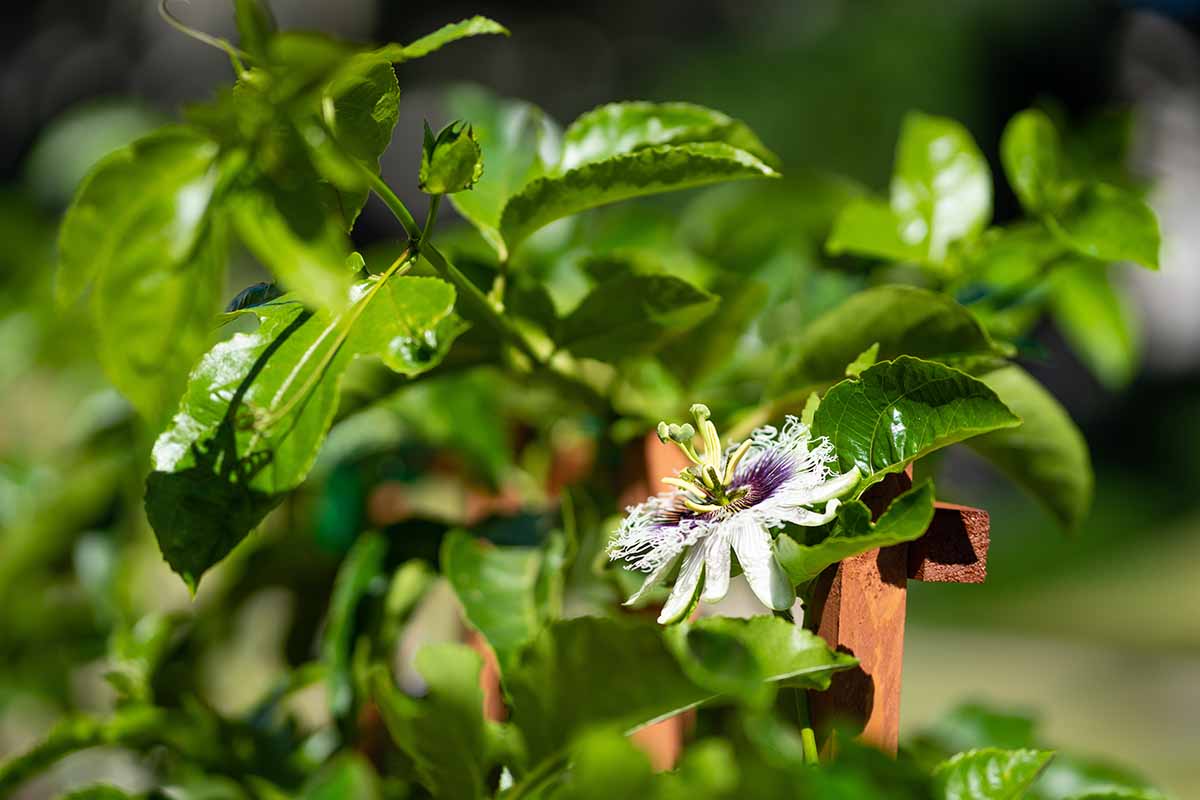
Once outdoor temperatures are sufficiently warm for your particular cultivar, bring it outside for an hour in the morning and place it where you intend to keep it.
Then bring it back inside and place it back in its sunny window, or if the plant was kept dormant, place it in a spot that receives bright, indirect light.
The next day, do the same thing but leave the container outdoors for two hours before bringing it back in. On the third day, leave it out for three hours. After 10 days of adding an extra hour each day, you can put your plant in its permanent home.
Protect Your Plant Outdoors During the Winter
You won’t be able to provide enough protection for these plants outdoors if you live in an area that is much colder than they can tolerate. Outdoor protection provides you with about one Zone of wiggle room.
For instance, if you have a passionflower that grows well down to USDA Hardiness Zone 6a, you can definitely keep one happy in your Zone 5b climate. But if you have that same plant and you live in Zone 4a, forget about it. You absolutely must overwinter indoors.
First things first: stop fertilizing your plant at least two months before the arrival of winter. You don’t want to encourage rapid growth when the vine should be getting ready to tuck itself in for the cold season ahead.
If your plant is in a container, move it near a brick or cement wall. The wall will reflect heat and keep your vine a bit more toasty. You can also wrap the container in blankets or burlap.
The goal is to protect the roots so they can survive through the coldest time of year and send up new shoots next spring.
You’ll likely lose the leaves and maybe even some of the vines during the winter, but when warm weather returns, new growth will emerge.
To protect your passionflower outdoors during the winter if it’s growing in the ground, add two or three inches of wood or leaf mulch around the plant. Don’t bury the vine in mulch, though. Keep it an inch away from the base of the vine.
In the spring, prune away any dead plant material.
Keep the Passion Alive
Everyone should be able to enjoy the beauty, fruits, and herbal benefits of passionflowers, whether you live in a chilly northern climate or somewhere perfectly suited to growing these plants. My mouth is watering just thinking about the fruits…
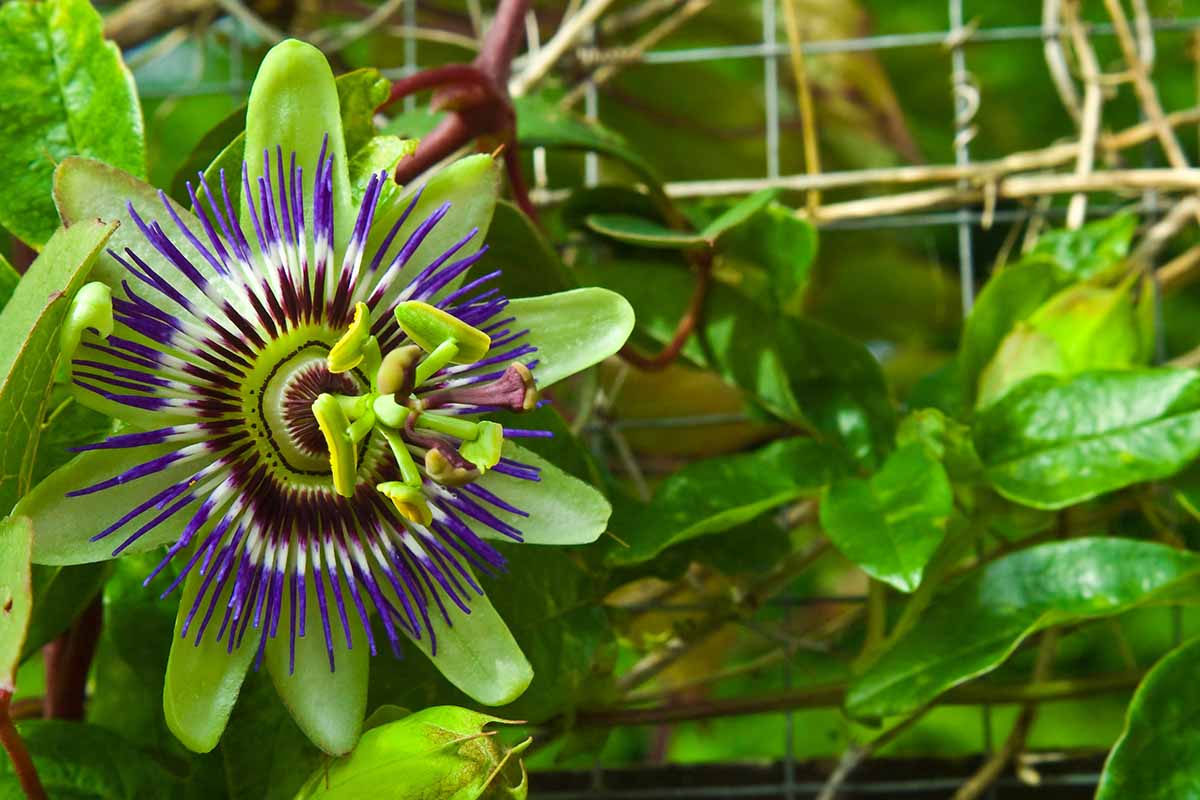
With a little extra work, you can keep passionflowers around for years and years. What area do you live in? Which method are you using to keep your plants alive? Let us know in the comments!
To help you make the most of these marvelous vines, we have a few more passionflower guides that you might find useful:
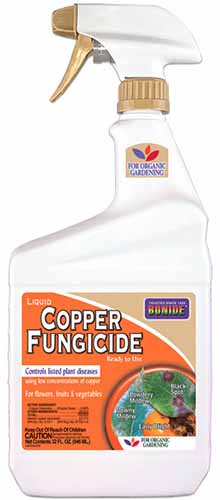
Hi Kristine, I live in the West Slope of Portland, Oregon and have a Red Rover Passiflora Edulis in a huge pot outside. I planted an 8″ plant there in May and it is now climbing all over the deck and has three fruits half formed——……but now its time to take it inside for the winter and I’d like to keep it in the pot until I can take it back outside next Spring/summer. How much of the vine should or can be cut back?
Hi Cris, ‘Red Rover’ is easily one of my favorites for fruits. They’re delicious. My neighbor here in Hillsboro grows his in a brick planter against his house where it gets reflected heat from the brick wall in the afternoon. He leaves his plant out all year and just cuts it back and covers it with a thick layer of leaf mulch and it’s massive. He’s braver than I am! I’d definitely recommend taking yours indoors, especially with this cold snap we’ve been having. I’m dragging mine in this weekend. Back to your question: you can cut it back a… Read more »
Hi Kristine – I live in zone 3b and have 2 Maypop passifloras. I’ve overwintered them in the garage and wonder what night time temperatures they can tolerate in the spring….I think it’s different than they can tolerate in the fall. Thanks. 🙂
Hi Carol, I’ve never heard that their temperature tolerance changes from fall to spring, but I can tell you that once the worst of winter has passed, you can start hardening off your Passiflora incarnata. Bring it inside the garage when you have a hard freeze, but otherwise, you can start the process of hardening off once nighttime temps are regularly above freezing. Technically, they can tolerate even lower temps than freezing. They can survive down to 20°F, but there are a few factors to consider. First, your plants have been protected, so they’ll be less tolerant of extreme cold.… Read more »
I’m still new to growing passiflora incarnata, but what I’ve found is that there’s a big difference between what the root system can handle, and what the foliage can handle. The foliage can handle temps only down to 28F or so, however, I’ve had the root system successfully overwinter in ground (granted with thick mulch) down to -8F. I’ve also found that once my garage’s average temperature dropped to 40F or so, they went dormant (I suppose that’s partly due to being potted). To avoid waking your plants up in the spring and then throwing them off by going dormant… Read more »
Hi, just bought to Becky Blue passionflower plants. Wondering if in 5B I can manage to keep these alive in the ground over winter. Thanks for the help
Hi Benjamin, even though ‘Becky Blue’ is rated for Zone 6, all of us have warmer and cooler areas in our gardens. If you have a spot next to a wall that will reflect the warmth of the sun in the winter, that will help your plant stay warmer. Planting in a higher area is usually warmer than a lower area, and a protected area between a house and a garage, for instance, will stay warmer as well. You can also cut the plant back before the first frost in the fall and heap a few inches of mulch like… Read more »
I overwintered blue passionflower (passiflora caerulea) in ground in zone 6 (suburban Toronto) in 2022-2023 and they grew back, however, it was a milder than average winter, the vines died back, and it took a fairly long time for them to grow new shoots from the roots. The vines for caerulea die back to the ground around 12-15F in my experience, which means they’re all but certain to die back in 5B. If it has to grow back from the roots each season, the plants will have time for growing leaves, but likely not for growing flowers. So I’d recommend… Read more »
Can my passion flower survive outdoor at -30 or-35
Hi Judy, unfortunately, no. The most hardy species can only survive down to 20°F.
I’ve had the root system of passiflora caerulea and incarnata survive a winter with temperatures down to -8F, which means the vines die back, then grow back from the roots. Caerulea has the hardiest foliage, which can survive down to 15F. I recommend growing in a container, and overwintering indoors. The hardier varieties might be able to overwinter in an unheated but well insulated garage in cold climates.
Thanks for your input Nicolas!
I bought a Passionflower vine for my mom for Mother’s Day. I have it growing from a large pot outdoors in bright indirect sun. I plan on cutting her back some, since the vines are reaching my roof now!
I will overwinter it indoors in my basement. Or
I may keep her as a house plant grow lights.
Thank you for the great information.
Hi Dina, sounds like one happy plant! Enjoy it, and thanks for sharing!
Hi Kristine, I live in zone 8b Texas. She is good to 25 but we got much lower here unfortunately. I left mine out in the big pot during but well protected it with thick mulch and multiple thick plant blankets especially around the roots. It got very cold here and very very windy. The vines have split near the bottom close to the dirt level. I wrapped them in bandage wrap. They are still green below the wrap so I am assuming the roots are good. Should I leave her as is or cut her back to below where… Read more »
Hi Kara, this winter has been a monster, hasn’t it? We dropped down to 18°F in my Portland 8B neighborhood. I’m eager to see which plants made it through.
It sounds like the roots are fine, but I would for sure cut them back to below the split. As long as the weather is above freezing and projected to stay that way for the next day, you can prune anytime. Winter is a good time to prune, you just want to avoid pruning when the stem is frozen.